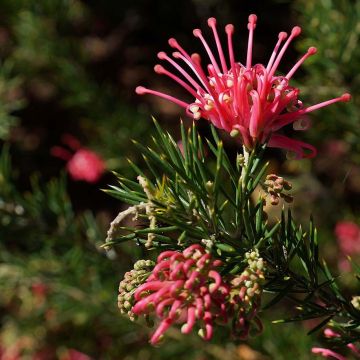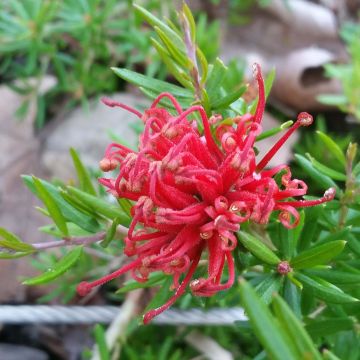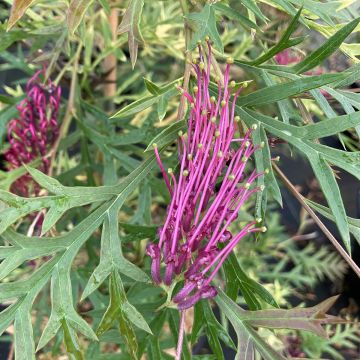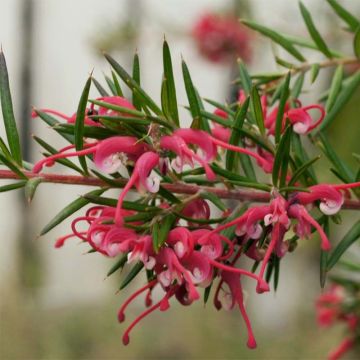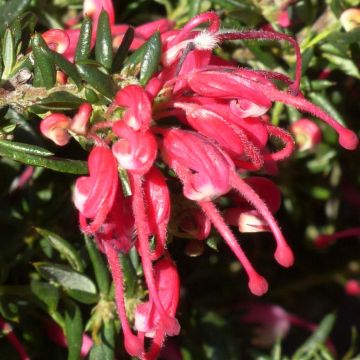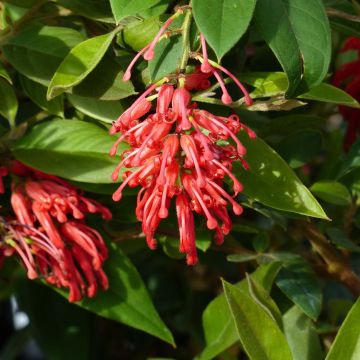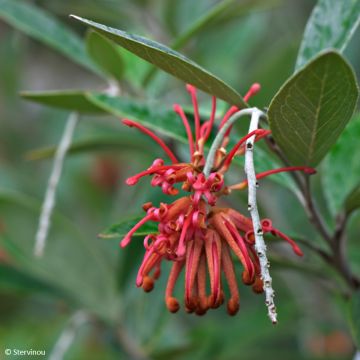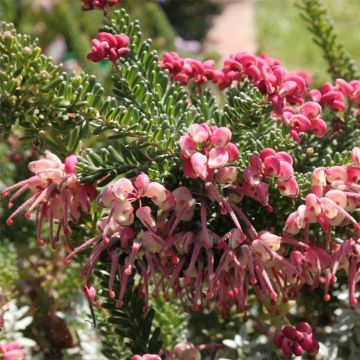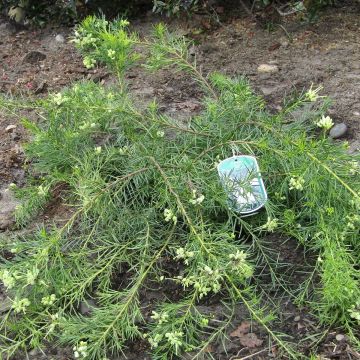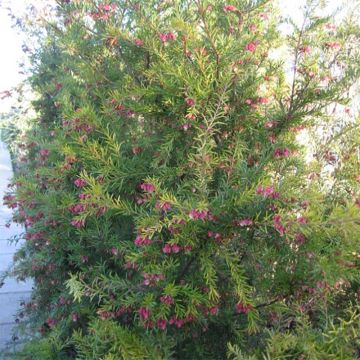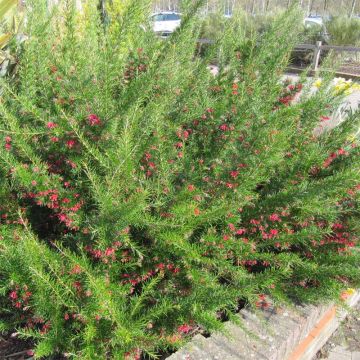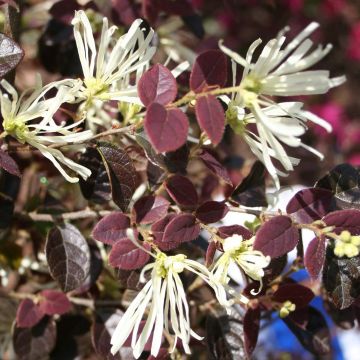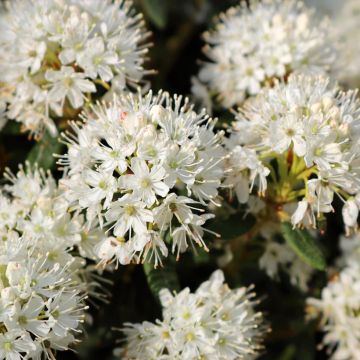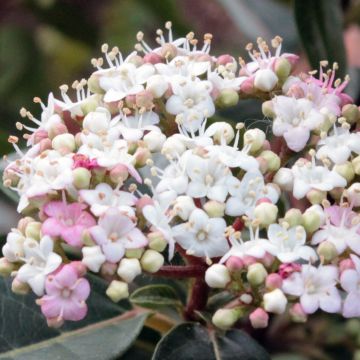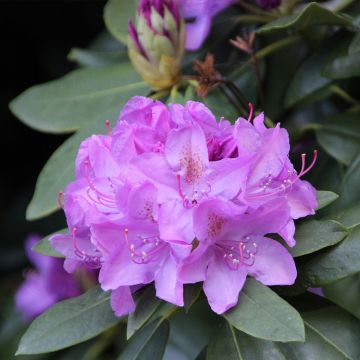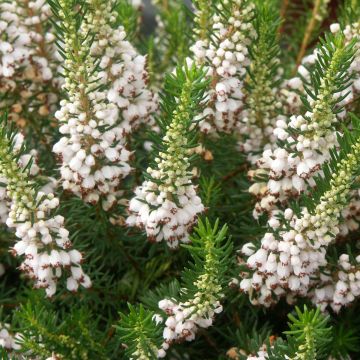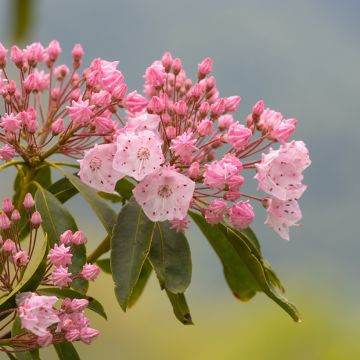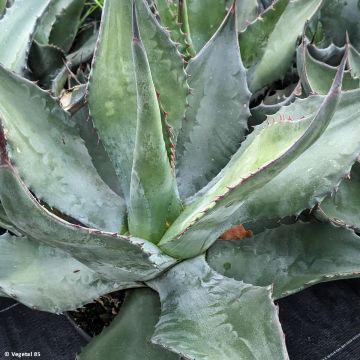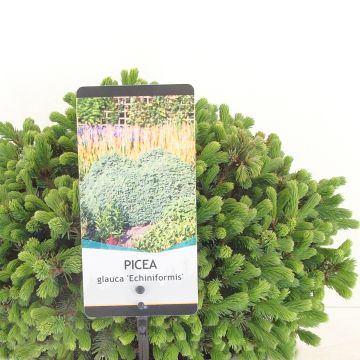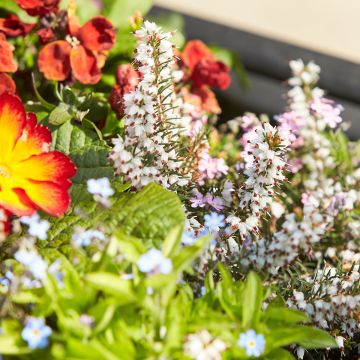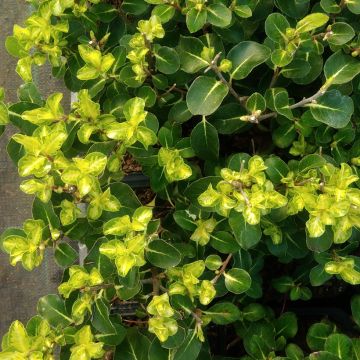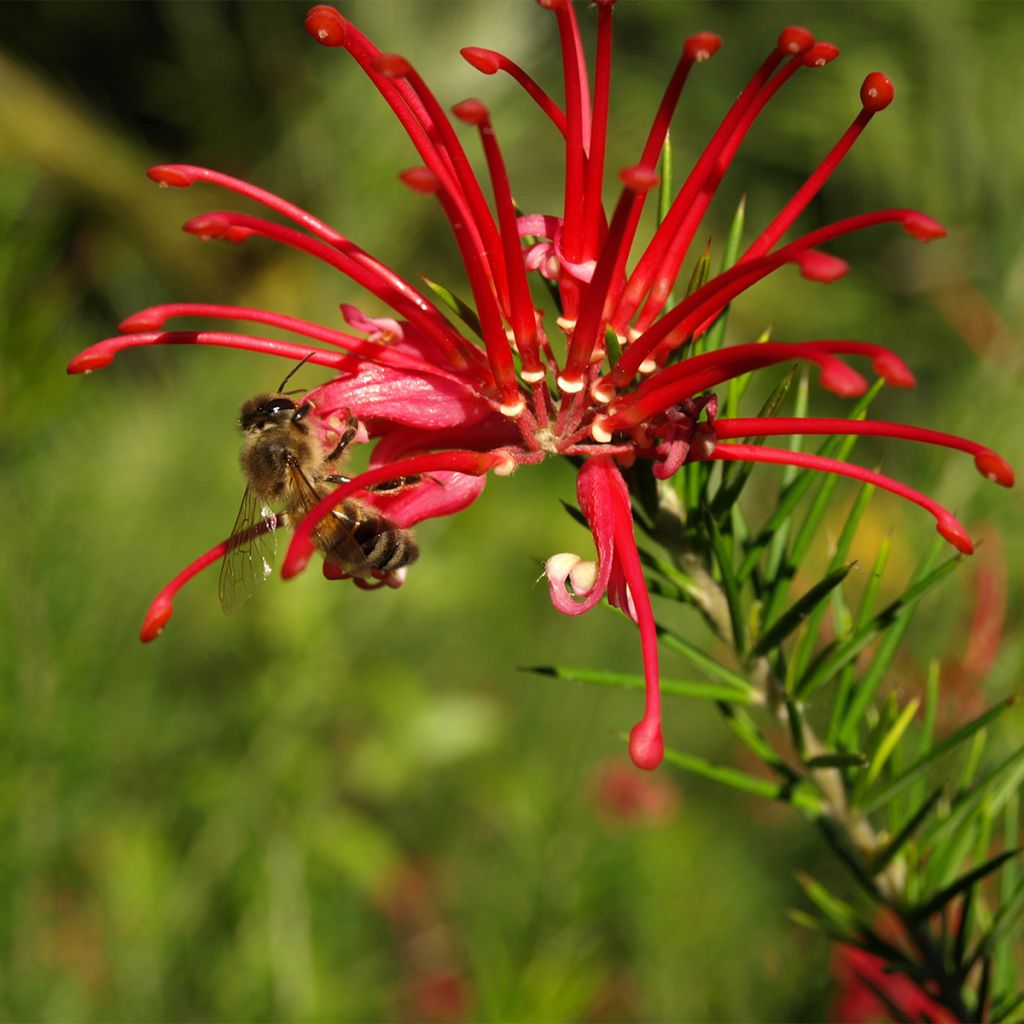

Grevillea Clearview David
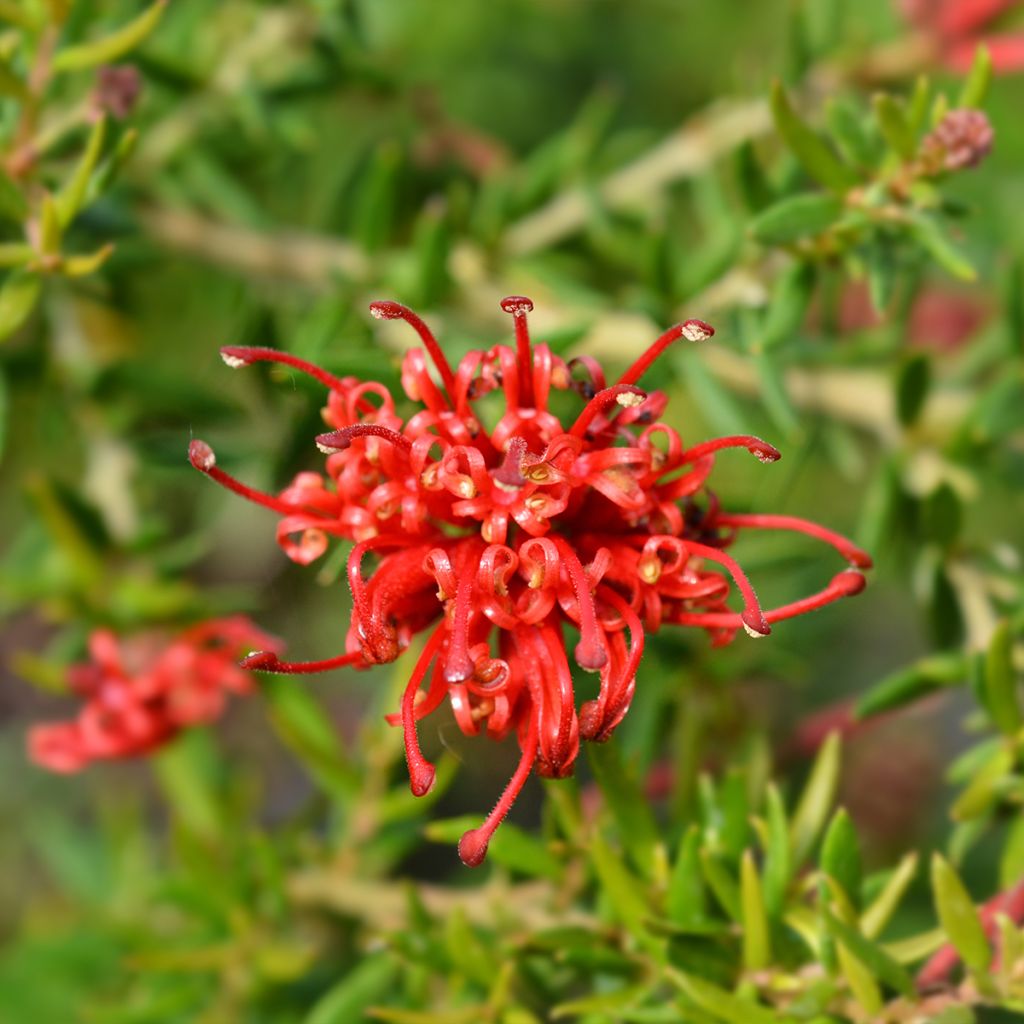

Grevillea Clearview David
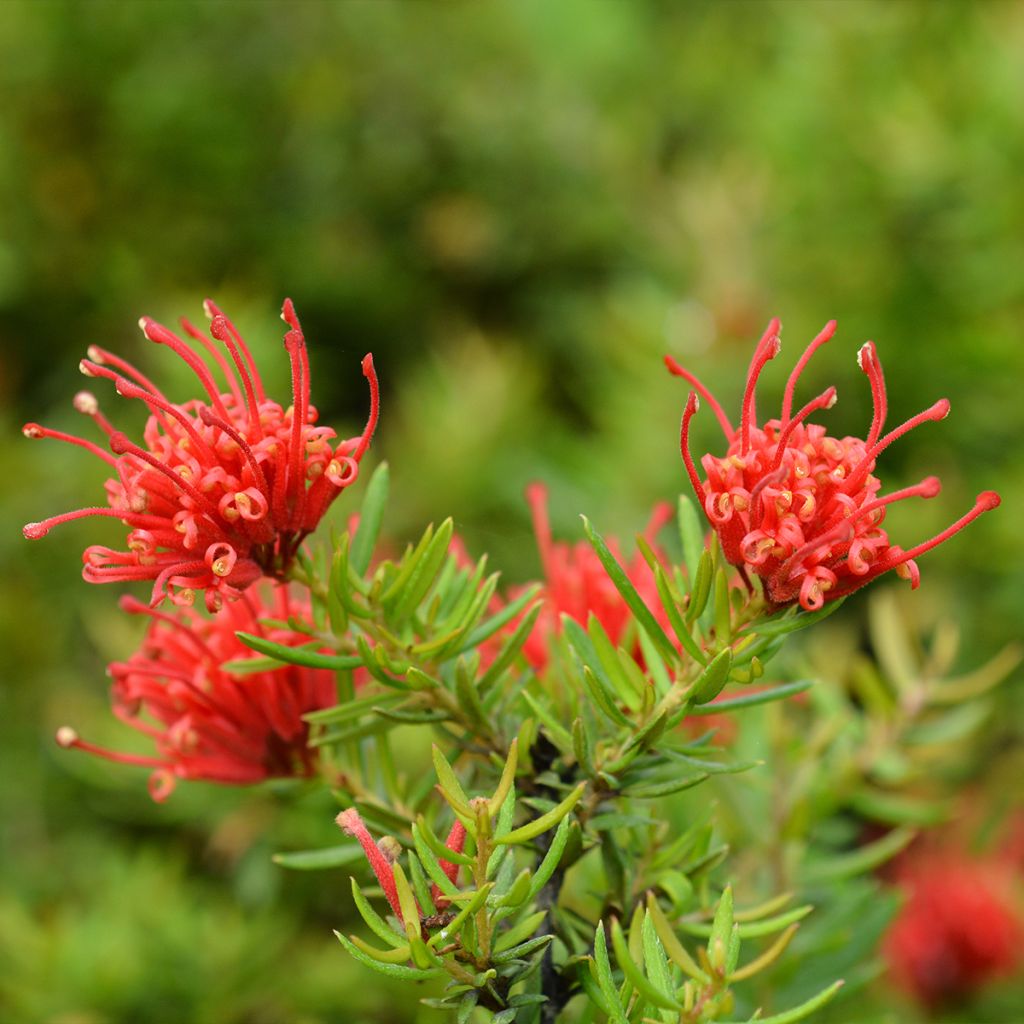

Grevillea Clearview David
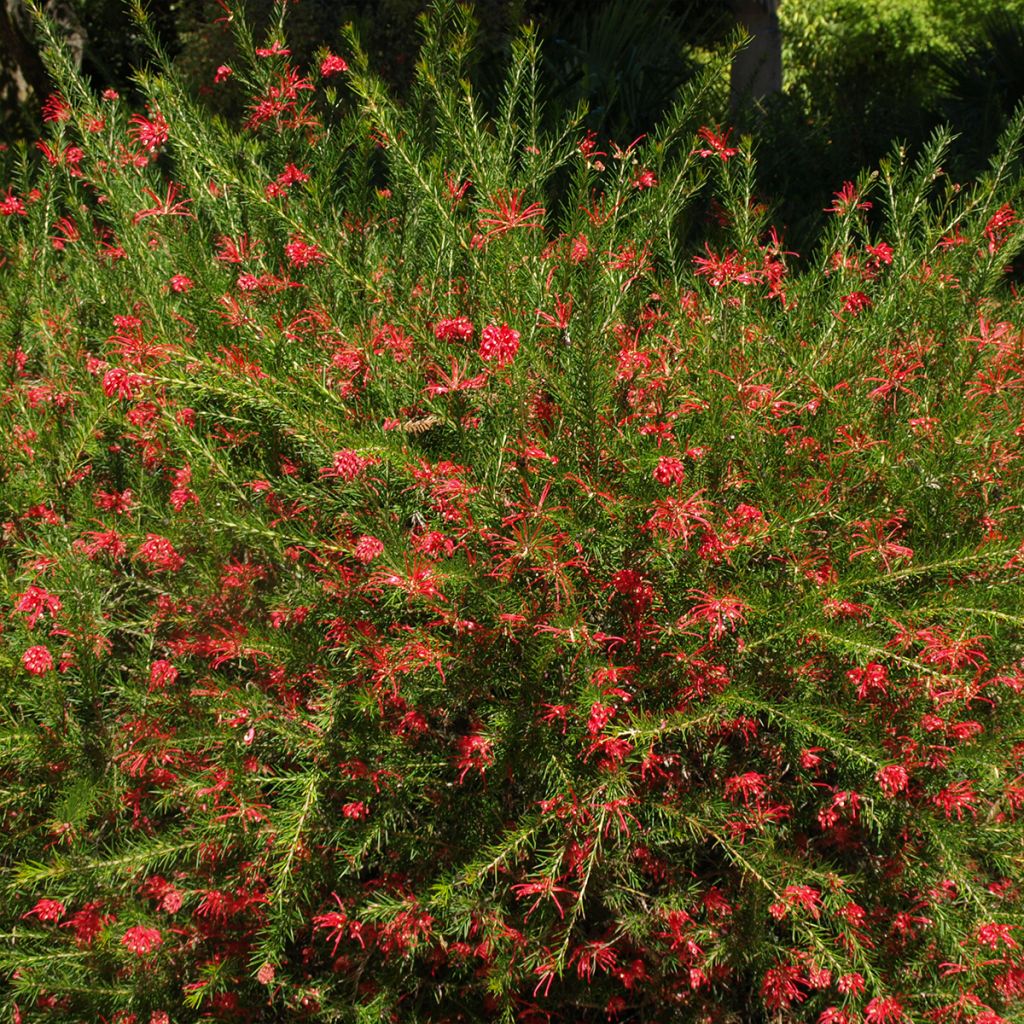

Grevillea Clearview David
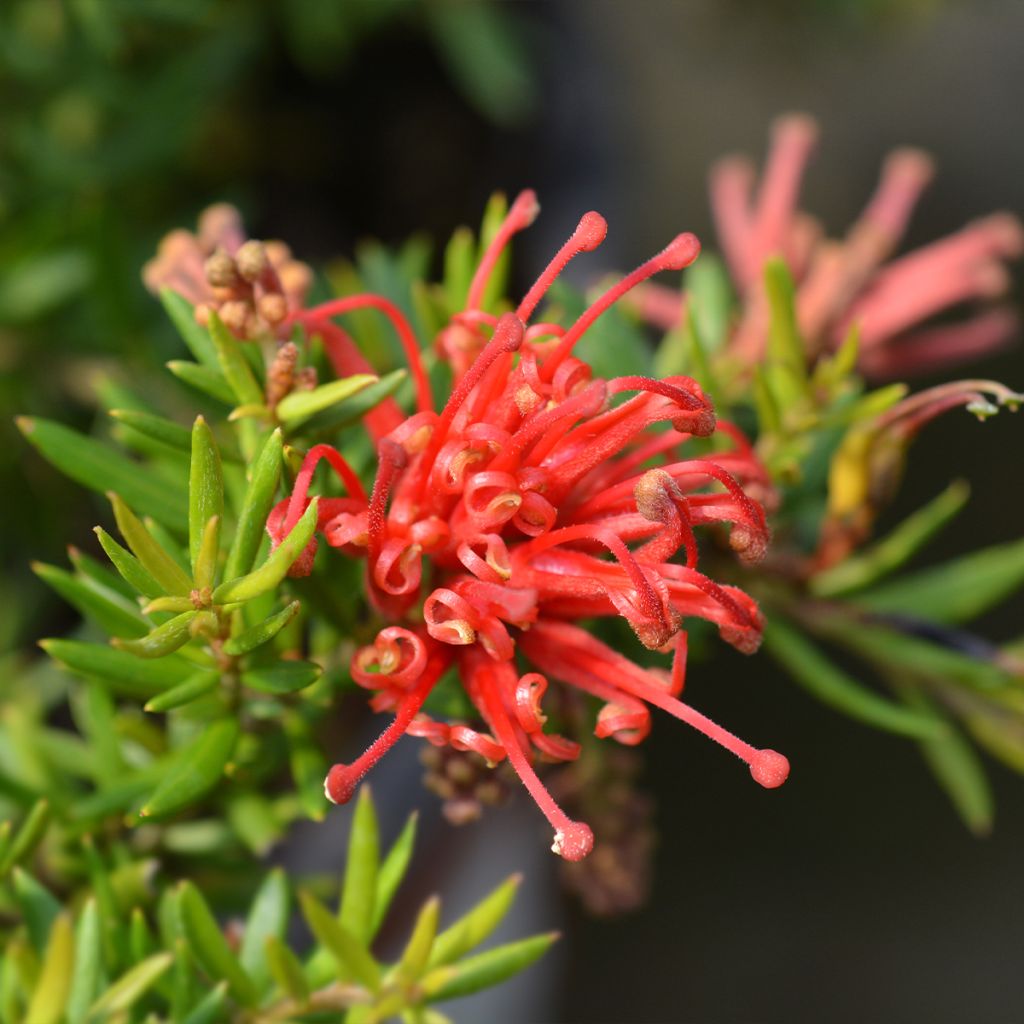

Grevillea Clearview David
Grevillea Clearview David
Grevillea rosmarinifolia Clearview David
Rosemary Grevillea, Spider Flower
Why not try an alternative variety in stock?
View all →This plant carries a 24 months recovery warranty
More information
We guarantee the quality of our plants for a full growing cycle, and will replace at our expense any plant that fails to recover under normal climatic and planting conditions.
From €5.90 for pickup delivery and €6.90 for home delivery
Express home delivery from €8.90.
Delivery to Corse prohibited: UE law prohibits the import of this plant from mainland France to Corse as part of the fight against Xylella fastidiosa. Please accept our sincere apologies.
More information
Does this plant fit my garden?
Set up your Plantfit profile →
Description
Grevillea rosmarinifolia Clearview David is a particularly floriferous cultivar that has a profusion of magnificent scarlet red, spider-like flowers appearing along the branches from February until the end of spring. In mild climates, it even blooms again later in the season, in late autumn. Perfectly adapted to coastal areas it is a precious bush for seaside gardens, as its foliage can withstand sea spray.
Grevillea is a shrub native to Australia, from the family of Proteaceae, known for plants with some of the most spectacular flowerings in the world, but often difficult to grow. Relatively small (about 3-4 cm (1.2-1.6 in)), the flowers of this Clearview David variety are petal-less, the styles form a graceful rounded shape while the stamens burst out, evoking the posture of certain spiders. Mostly bright red, they are actually bi-coloured, with a creamy white underside. These flowers illuminate the foliage from which they stand out due to their abundance, as well as the contrast of colour and shape. The leaves are short (2-3 cm (0.8-1.2 in)) and thin (3 mm (0.1 in)), in the shape of simple needles, a beautiful dark green which contrasts with the sophisticated aesthetics of the flowers. The foliage is slightly prickly to the touch, but less so than in its cousin, the Grevillea juniperina. With rapid growth, this shrub naturally takes on a ball-shaped habit, reaching about 1.50 m (4 ft 11 in) in all directions, or even 2 m (6 ft 7 in) high in mild climate regions, where it can be used as a hedge. The bush is very resistant to summer drought and adapts easily to poor soil (especially low in phosphorus, an element it does not appreciate). Once well established, it can withstand dry cold temperatures of about -10°C (14 °F) (but will suffer earlier in humid conditions). As a true Proteaceae, the Grevillea Clearview David dislikes active limestone, which causes chlorosis of the foliage, changing it from a beautiful bright green to a sickly yellow. A neutral to acidic, well-draining, even dry soil, poor in phosphorus, a climate without intense or prolonged cold and exposure to sunlight are the keys to its success.
Due to its soil and climate requirements, Grevillea Clearview David will perfectly associate with other members of its family, such as the Leucadendron Safari Sunset (with purple foliage, therefore interesting rendering) in mild climates. To create a contrast of flower colour, consider Fremontodendron with its dazzling yellow flowering, Cistus ladanifer with white flowers, or Teucrium fruticans (blue).
Acacia podalyriifolia (moutteana) with its very architectural grey-blue foliage and yellow winter flowering will be an ideal companion. Having the same characteristics (cultural needs, growth rate, etc.) as this Grevillea, it will be good to plant it in the background to create an original scene and benefit from a permanent spectacle of shapes and colours!
The genus Grevillea was named in honour of Charles Francis Greville, one of the co-founders of the prestigious British Royal Horticulture Society (RHS), and a patron of botany. The first representatives of grevilleas were introduced to Europe as early as the late 18th century.
Report an error about the product description
Grevillea Clearview David in pictures
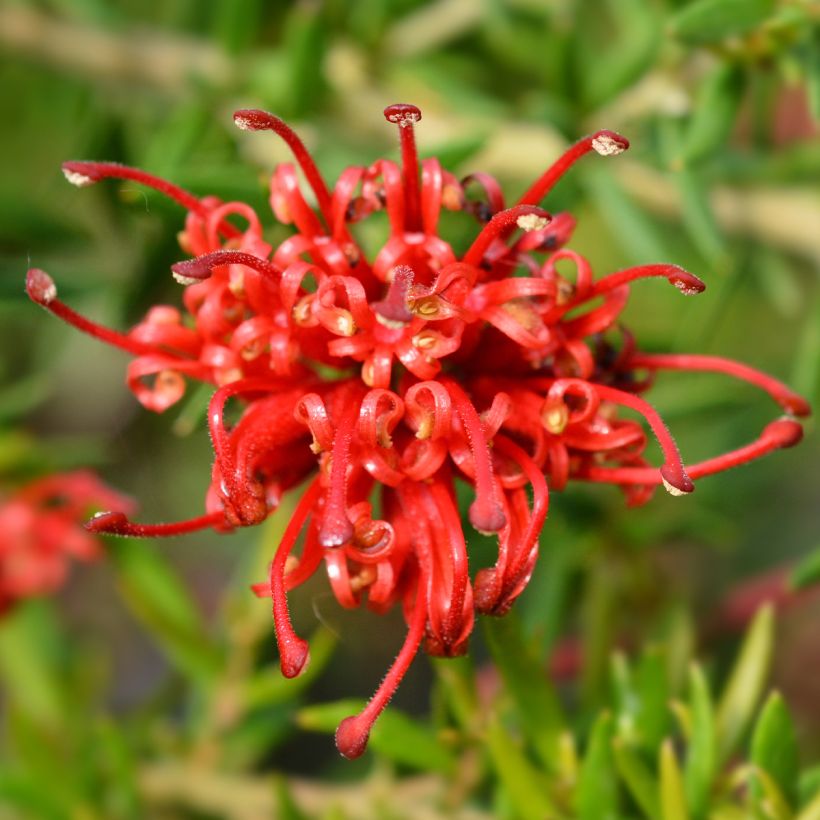

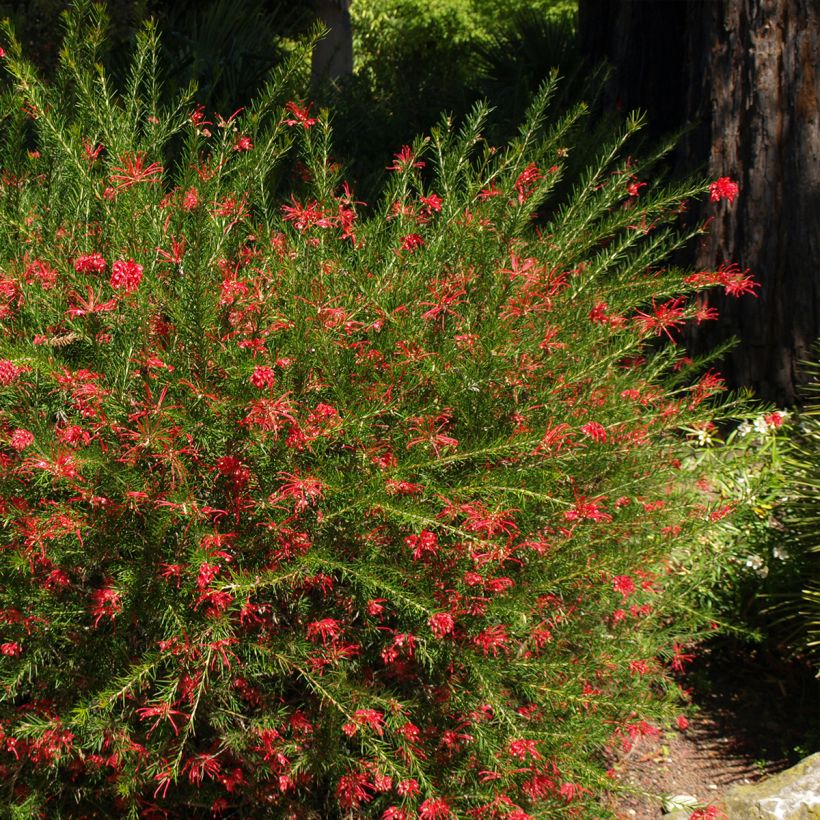

Plant habit
Flowering
Foliage
Botanical data
Grevillea
rosmarinifolia
Clearview David
Proteaceae
Rosemary Grevillea, Spider Flower
Cultivar or hybrid
Other Grevillea
Planting and care
In a climate with a mild winter Grevillea can be planted in autumn, in cooler areas it is better to wait until spring. This way, it will have the whole season to establish itself and will better withstand the first winter.
Poor or even mediocre, soil will be suitable, provided it is well-drained and not chalky. This is especially important in winter, as the hardiness of this type of plant is directly related to the soil moisture level. A neutral soil (pH close to 7) can be enriched with ericaceous soil and non-chalky sand.
If planted in a container in a cold region, it can tolerate light frosts, but it should be remembered that the roots in a container are exposed to cold from all sides, therefore, the container should be brought indoors as soon as frosts become regular and pronounced (from -5 °C).
In a favourable climate, it can tolerate light shade, but it is best to expose it to full sun, especially in borderline climatic zones.
Under these soil and exposure conditions, it proves to be a resilient plant, with little susceptibility to insect or disease attacks.
Its maintenance is limited: watering during the first year to promote root growth, fertilizing with a low-phosphorus fertilizer (not necessary in fertile soil) and lightly pruning after flowering, in containers (not really necessary in the ground). Only water in case of very dry summer, allowing the soil to dry well between waterings to prevent any collar rot (rare).
Planting period
Intended location
Care
This item has not been reviewed yet - be the first to leave a review about it.
Evergreen shrubs
Haven't found what you were looking for?
Hardiness is the lowest winter temperature a plant can endure without suffering serious damage or even dying. However, hardiness is affected by location (a sheltered area, such as a patio), protection (winter cover) and soil type (hardiness is improved by well-drained soil).

Photo Sharing Terms & Conditions
In order to encourage gardeners to interact and share their experiences, Promesse de fleurs offers various media enabling content to be uploaded onto its Site - in particular via the ‘Photo sharing’ module.
The User agrees to refrain from:
- Posting any content that is illegal, prejudicial, insulting, racist, inciteful to hatred, revisionist, contrary to public decency, that infringes on privacy or on the privacy rights of third parties, in particular the publicity rights of persons and goods, intellectual property rights, or the right to privacy.
- Submitting content on behalf of a third party;
- Impersonate the identity of a third party and/or publish any personal information about a third party;
In general, the User undertakes to refrain from any unethical behaviour.
All Content (in particular text, comments, files, images, photos, videos, creative works, etc.), which may be subject to property or intellectual property rights, image or other private rights, shall remain the property of the User, subject to the limited rights granted by the terms of the licence granted by Promesse de fleurs as stated below. Users are at liberty to publish or not to publish such Content on the Site, notably via the ‘Photo Sharing’ facility, and accept that this Content shall be made public and freely accessible, notably on the Internet.
Users further acknowledge, undertake to have ,and guarantee that they hold all necessary rights and permissions to publish such material on the Site, in particular with regard to the legislation in force pertaining to any privacy, property, intellectual property, image, or contractual rights, or rights of any other nature. By publishing such Content on the Site, Users acknowledge accepting full liability as publishers of the Content within the meaning of the law, and grant Promesse de fleurs, free of charge, an inclusive, worldwide licence for the said Content for the entire duration of its publication, including all reproduction, representation, up/downloading, displaying, performing, transmission, and storage rights.
Users also grant permission for their name to be linked to the Content and accept that this link may not always be made available.
By engaging in posting material, Users consent to their Content becoming automatically accessible on the Internet, in particular on other sites and/or blogs and/or web pages of the Promesse de fleurs site, including in particular social pages and the Promesse de fleurs catalogue.
Users may secure the removal of entrusted content free of charge by issuing a simple request via our contact form.
The flowering period indicated on our website applies to countries and regions located in USDA zone 8 (France, the United Kingdom, Ireland, the Netherlands, etc.)
It will vary according to where you live:
- In zones 9 to 10 (Italy, Spain, Greece, etc.), flowering will occur about 2 to 4 weeks earlier.
- In zones 6 to 7 (Germany, Poland, Slovenia, and lower mountainous regions), flowering will be delayed by 2 to 3 weeks.
- In zone 5 (Central Europe, Scandinavia), blooming will be delayed by 3 to 5 weeks.
In temperate climates, pruning of spring-flowering shrubs (forsythia, spireas, etc.) should be done just after flowering.
Pruning of summer-flowering shrubs (Indian Lilac, Perovskia, etc.) can be done in winter or spring.
In cold regions as well as with frost-sensitive plants, avoid pruning too early when severe frosts may still occur.
The planting period indicated on our website applies to countries and regions located in USDA zone 8 (France, United Kingdom, Ireland, Netherlands).
It will vary according to where you live:
- In Mediterranean zones (Marseille, Madrid, Milan, etc.), autumn and winter are the best planting periods.
- In continental zones (Strasbourg, Munich, Vienna, etc.), delay planting by 2 to 3 weeks in spring and bring it forward by 2 to 4 weeks in autumn.
- In mountainous regions (the Alps, Pyrenees, Carpathians, etc.), it is best to plant in late spring (May-June) or late summer (August-September).
The harvesting period indicated on our website applies to countries and regions in USDA zone 8 (France, England, Ireland, the Netherlands).
In colder areas (Scandinavia, Poland, Austria...) fruit and vegetable harvests are likely to be delayed by 3-4 weeks.
In warmer areas (Italy, Spain, Greece, etc.), harvesting will probably take place earlier, depending on weather conditions.
The sowing periods indicated on our website apply to countries and regions within USDA Zone 8 (France, UK, Ireland, Netherlands).
In colder areas (Scandinavia, Poland, Austria...), delay any outdoor sowing by 3-4 weeks, or sow under glass.
In warmer climes (Italy, Spain, Greece, etc.), bring outdoor sowing forward by a few weeks.

































